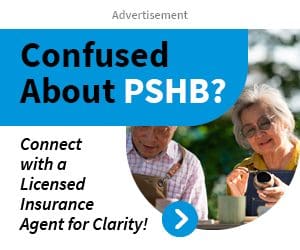Key Takeaways:
- USPS employees should evaluate their healthcare needs, provider access, and cost implications when choosing a PSHB plan.
- Careful consideration of each PSHB option will ensure USPS employees are well-prepared for the 2024 open enrollment period.
PSHB Plan Choices: What USPS Employees Should Consider Before Open Enrollment
As open enrollment for the Postal Service Health Benefits (PSHB) program approaches, USPS employees face crucial decisions about their healthcare coverage. With the transition to the new PSHB program set for January 2025, this year’s open enrollment period, running from November 11 to December 9, 2024, will be particularly important. Employees must carefully weigh their options to ensure they choose a plan that meets their healthcare needs and financial considerations. This article outlines the essential factors USPS employees should consider before making their PSHB plan selection.
Understanding the Transition to PSHB
The PSHB program is a significant change in the healthcare landscape for USPS employees. Established under the Postal Service Reform Act of 2022, the PSHB will replace the Federal Employees Health Benefits (FEHB) program exclusively for postal workers and retirees. This change is designed to align more closely with the specific needs of USPS employees, ensuring they receive the best possible care.
The transition also includes a mandate for most USPS retirees to enroll in Medicare Part B as of 2025 if they are eligible. This integration aims to optimize healthcare coverage and reduce costs for retirees by combining Medicare with the PSHB benefits. Understanding these changes is vital as employees assess their plan options during open enrollment.
Evaluating Healthcare Needs
When choosing a PSHB plan, USPS employees should start by evaluating their personal and family healthcare needs. Consideration should be given to current health conditions, the frequency of doctor visits, and any ongoing treatments or medications. Plans within the PSHB program may offer different levels of coverage for various healthcare services, so understanding which services you or your family frequently use will help in selecting the most appropriate plan.
Additionally, it’s important to think about potential future healthcare needs. For instance, if you anticipate major medical procedures or expect to add a family member, such as a child, to your coverage in the near future, you’ll want to ensure your plan provides adequate support.
Comparing Provider Networks
Provider networks are another critical factor to consider when selecting a PSHB plan. A plan’s network determines which doctors, hospitals, and specialists you can access at the lowest cost. Before choosing a plan, check if your current healthcare providers are included in the network. If you have a preferred doctor or specialist, ensuring they are within the plan’s network can save you from unexpected out-of-network costs.
Some PSHB plans may offer broader networks than others, allowing for greater flexibility in choosing healthcare providers. However, broader networks might come with higher premiums or out-of-pocket costs. Balancing your need for provider access with your budget is crucial in making the best choice.
Analyzing Cost Implications
While the cost should not be the sole determining factor in choosing a PSHB plan, it is undoubtedly one of the most important. USPS employees need to consider both the monthly premium and out-of-pocket costs such as deductibles, copayments, and coinsurance. Lower premiums might seem attractive, but they often come with higher out-of-pocket costs when accessing healthcare services.
It’s also essential to evaluate the plan’s maximum out-of-pocket limit, which caps your annual spending on covered services. Plans with lower maximum out-of-pocket limits can provide greater financial protection in the event of significant medical expenses.
Additionally, for retirees or those planning retirement, understanding the integration of PSHB with Medicare Part B is critical. Since Medicare Part B will become mandatory for most retirees, evaluating the total cost of coverage, including Medicare premiums and PSHB plan costs, will help in making an informed decision.
Understanding Prescription Drug Coverage
Prescription drug coverage is another key aspect of the PSHB plans. Employees should review the formulary, which is the list of covered medications, for each plan to ensure their current medications are covered. The cost-sharing structure for prescriptions, such as copayments or coinsurance, can vary significantly between plans.
For those who require specialty medications or have chronic conditions requiring long-term medication, the differences in prescription coverage could result in substantial cost differences. Some plans may offer lower costs for generic drugs, while others might provide better coverage for brand-name medications. Carefully comparing these aspects will help you select a plan that meets your prescription drug needs at an affordable cost.
Assessing Additional Benefits
Beyond the standard medical and prescription drug coverage, PSHB plans may offer additional benefits such as dental, vision, or wellness programs. These benefits can add value to a plan, particularly if they cover services you or your family frequently use. For example, if you wear glasses or contact lenses, a plan with robust vision coverage could save you money.
Some plans might also offer health and wellness programs, such as gym memberships, telehealth services, or discounts on health-related products. These programs can contribute to your overall well-being and may be worth considering if you plan to use them.
Considering Family Coverage
If you’re covering dependents, it’s essential to consider their healthcare needs alongside your own. Family coverage typically comes with higher premiums, but the benefits of comprehensive coverage for your entire family can outweigh the additional costs. Ensure the plan you choose offers adequate coverage for pediatric care, maternity services, and other family-specific needs.
For families with children, checking the plan’s coverage for pediatric services, including immunizations, routine check-ups, and emergency care, is crucial. Additionally, some plans may offer family-friendly benefits such as discounts on fitness programs or access to family counseling services.
Navigating Enrollment and Eligibility
Understanding the enrollment process and eligibility requirements is crucial during the open enrollment period. USPS employees need to ensure they are aware of the enrollment deadlines and any documentation required for enrolling in a PSHB plan. Missing the enrollment period could result in a lack of coverage for the upcoming year, which could have significant financial implications.
For retirees, it’s important to confirm eligibility for Medicare and understand how to enroll in both Medicare Part B and a PSHB plan. The process can be complex, and early preparation will help avoid any last-minute issues.
Preparing for Open Enrollment
Open enrollment for the PSHB program requires careful preparation. USPS employees should take the time to review all available plan options, compare their benefits, and consider their specific healthcare needs. It’s also advisable to attend any informational sessions or webinars offered by the USPS or consult with a benefits advisor to gain a clearer understanding of the choices available.
Using online tools and resources can also be helpful. Many plans offer calculators that allow you to estimate your healthcare costs under different plans based on your usage. This can be a valuable resource in making a well-informed decision.
Making an Informed Decision
Selecting the right PSHB plan involves balancing your healthcare needs, provider access, and financial considerations. The decisions you make during this open enrollment period will affect your healthcare coverage for the entire year, so it’s essential to approach the process with careful thought and consideration.
For USPS employees, particularly those nearing retirement, this decision also involves considering the integration of Medicare and how it will impact your overall healthcare costs and coverage. By thoroughly evaluating each aspect of the available PSHB plans, you can choose the option that best meets your needs and provides peace of mind for the future.
Planning Ahead for the Transition
As the PSHB program replaces the FEHB program in 2025, planning ahead for this transition is crucial. USPS employees should stay informed about any updates or changes to the program that may occur between now and the full implementation of the PSHB. Understanding how this transition will affect your coverage and costs will ensure that you are well-prepared and can make any necessary adjustments to your plan selections in the coming years.
Looking Ahead to Your Healthcare Needs
Choosing the right PSHB plan during open enrollment is a significant decision that requires careful consideration of your current and future healthcare needs, financial situation, and the benefits offered by each plan. By taking the time to evaluate all these factors, USPS employees can ensure they select a plan that provides comprehensive coverage and supports their overall health and well-being throughout the year.
Contact Information:
Email: [email protected]
Phone: 4805551234










